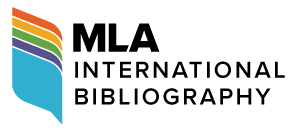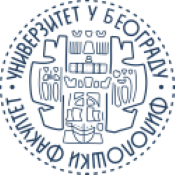Krinka Vidaković-Petrov and Kalmi Baruh: an Intersubjective Biographical Perspective
DOI:
https://doi.org/10.18485/beoiber.2019.3.1.8Abstract
Krinka Vidaković-Petrov has devoted much of her extensive academic career to studying the Hispanist Kalmi Baruh. In fact, the researcher considers him the «father» of the Spanish studies in Yugoslavia. The present article intends to analyze her personal connection with the Bosnian-Sephardic intellectual through the biographical method, including the attendance to one of her academic presentations, three meetings that took place in Belgrade and a personal document written by her. The aim of the article, despite the limitations of this research model, is to highlight the relevance of the work carried out by Vidaković-Petrov and to analyze the cognitive fundamentals that justify her interest in Kalmi Baruh in personally and professionally disadvantageous conditions, but which show a strong political determination to give voice to the Sephardic world after the Holocaust.Key words: Krinka Vidaković-Petrov, Kalmi Baruh, biography, Hispanism, Sephardic, Yugoslavia.References
Allport, Gordon W. The Use of Personal Documents in Psychological Science. Prepared for the Committee on Appraisal of Research. New York: Social Science Research Council, 1942. Print.
Capriati, Alejandro. «Tensiones y desafíos en el uso del método biográfico». Cinta de moebio, 60 (2017): 316–327. Revistas académicas de la Universidad de Chile. Web. 6 Ene. 2019.
Denzin, Norman K. Interpretive Biography: Qualitative Research Methods. Book 17. Newbury Park, California: Sage Publications, 1989. Print.
Fox, H.J. «Perspectives on the continuity perspective». International Journal of Aging and Human Development, 14.2 (1981): 97–115. Print.
Pujadas Muñoz, Juan José. El método biográfico: el uso de las historias de vida en las ciencias sociales. Madrid: CIS, 2002. Impreso.
Sanz Hernández, Alexia. «El método biográfico en investigación social: potencialidades y limitaciones de las fuentes orales y los documentos personales». Asclepio, 57.2 (2005): 99–115. Web. 27 Dic. 2018.
Soldatić, Dalibor. «Las literaturas hispánicas en Serbia». Colindancias, 1 (2010): 21–28. Web. 10 Ene. 2019.
Vidaković-Petrov, Krinka. «Las adivinanzas sefardíes de Macedonia». Balkania, 6 (2015): 36–53. Web. 27 Dic. 2018.
—. «Kalmi Baruh y los estudios hispánicos modernos en Yugoslavia». Anđelka Pejović et al. (eds.), Estudios hispánicos en la cultura y ciencia Serbia: actas de la Primera conferencia nacional de hispanistas serbios (Facultad de Filología y Artes de Kragujevac, 28–29 noviembre 2014), Kragujevac: Filološko-umetnički fakultet, 2016: 161–169. Impreso.
—. «Una historia que empieza como aventura y termina en nada nuevo». Documento Word inédito. 18 de marzo de 2018.
—. Kultura španskih Jevreja na jugoslovenskom tlu: XVI–XX vek, Svjetlost 1986. Štampano.
—. Kalmi Baruh Selected Works on Sephardic and Other Jewish Topics. Jerusalem: Moshe David Gaon Center for Ladino Culture, Shefer Publishers, 2007. Print.
—. «Jevrejske teme u radovima Vojislava Maksimovića». Univerzitet u Istočnom Sarajevu. Filološki Fakultet Pale. Radovi Filoloskog Fakulteta. Broj 12, Knjiga 1. Pal, 2010: 177–192. Štampano.
Vidaković-Petrov, Krinka. «Kalmi Baruh o Sefardima». Izraz, 5 (1976a): 801–811. Štampano.
—. «Mogućnosti proučavanja jezičko-književnog nasleđa španskih Jevreja na našem tlu» Forum, 7–8 (1976b): 302–312. Štampano.
—. «Jevrejsko-španski listovi u Bosni i Hercegovini» Mostovi, 1977.
—. «Sefardska književnost u Bosni i Hercegovini u svetlu dosadašnjih istraživanja». Akademija nauka i umjetnosti BiH. Naučni skup Književnost BiH u svijetlu dosadašnjih istraživanja, Knj. 5, Sarajevo: Posebna izdanja XXXV, 1978: 85–92. Štampano.
Capriati, Alejandro. «Tensiones y desafíos en el uso del método biográfico». Cinta de moebio, 60 (2017): 316–327. Revistas académicas de la Universidad de Chile. Web. 6 Ene. 2019.
Denzin, Norman K. Interpretive Biography: Qualitative Research Methods. Book 17. Newbury Park, California: Sage Publications, 1989. Print.
Fox, H.J. «Perspectives on the continuity perspective». International Journal of Aging and Human Development, 14.2 (1981): 97–115. Print.
Pujadas Muñoz, Juan José. El método biográfico: el uso de las historias de vida en las ciencias sociales. Madrid: CIS, 2002. Impreso.
Sanz Hernández, Alexia. «El método biográfico en investigación social: potencialidades y limitaciones de las fuentes orales y los documentos personales». Asclepio, 57.2 (2005): 99–115. Web. 27 Dic. 2018.
Soldatić, Dalibor. «Las literaturas hispánicas en Serbia». Colindancias, 1 (2010): 21–28. Web. 10 Ene. 2019.
Vidaković-Petrov, Krinka. «Las adivinanzas sefardíes de Macedonia». Balkania, 6 (2015): 36–53. Web. 27 Dic. 2018.
—. «Kalmi Baruh y los estudios hispánicos modernos en Yugoslavia». Anđelka Pejović et al. (eds.), Estudios hispánicos en la cultura y ciencia Serbia: actas de la Primera conferencia nacional de hispanistas serbios (Facultad de Filología y Artes de Kragujevac, 28–29 noviembre 2014), Kragujevac: Filološko-umetnički fakultet, 2016: 161–169. Impreso.
—. «Una historia que empieza como aventura y termina en nada nuevo». Documento Word inédito. 18 de marzo de 2018.
—. Kultura španskih Jevreja na jugoslovenskom tlu: XVI–XX vek, Svjetlost 1986. Štampano.
—. Kalmi Baruh Selected Works on Sephardic and Other Jewish Topics. Jerusalem: Moshe David Gaon Center for Ladino Culture, Shefer Publishers, 2007. Print.
—. «Jevrejske teme u radovima Vojislava Maksimovića». Univerzitet u Istočnom Sarajevu. Filološki Fakultet Pale. Radovi Filoloskog Fakulteta. Broj 12, Knjiga 1. Pal, 2010: 177–192. Štampano.
Vidaković-Petrov, Krinka. «Kalmi Baruh o Sefardima». Izraz, 5 (1976a): 801–811. Štampano.
—. «Mogućnosti proučavanja jezičko-književnog nasleđa španskih Jevreja na našem tlu» Forum, 7–8 (1976b): 302–312. Štampano.
—. «Jevrejsko-španski listovi u Bosni i Hercegovini» Mostovi, 1977.
—. «Sefardska književnost u Bosni i Hercegovini u svetlu dosadašnjih istraživanja». Akademija nauka i umjetnosti BiH. Naučni skup Književnost BiH u svijetlu dosadašnjih istraživanja, Knj. 5, Sarajevo: Posebna izdanja XXXV, 1978: 85–92. Štampano.
Downloads
Published
2019-05-26
How to Cite
Rodríguez Andreu, M. “Krinka Vidaković-Petrov and Kalmi Baruh: An Intersubjective Biographical Perspective”. BEOIBERÍSTICA - Journal of Iberian, Latin American and Comparative Studies (ISSN: 2560-4163 Online), vol. 3, no. 1, May 2019, pp. 121-35, doi:10.18485/beoiber.2019.3.1.8.
Issue
Section
SEFARAD
License
Authors who publish with this journal agree to the following terms:
- Authors retain copyright and grant the journal right of first publication with the work simultaneously licensed under a Creative Commons Attribution-ShareAlike 4.0 International License that allows others to share the work with an acknowledgement of the work's authorship and initial publication in this journal.
- Authors are able to enter into separate, additional contractual arrangements for the non-exclusive distribution of the journal's published version of the work (e.g., post it to an institutional repository or publish it in a book), with an acknowledgement of its initial publication in this journal.
- Authors are permitted and encouraged to post their work online (e.g., in institutional repositories or on their website) prior to and during the submission process, as it can lead to productive exchanges, as well as earlier and greater citation of published work (See The Effect of Open Access).













